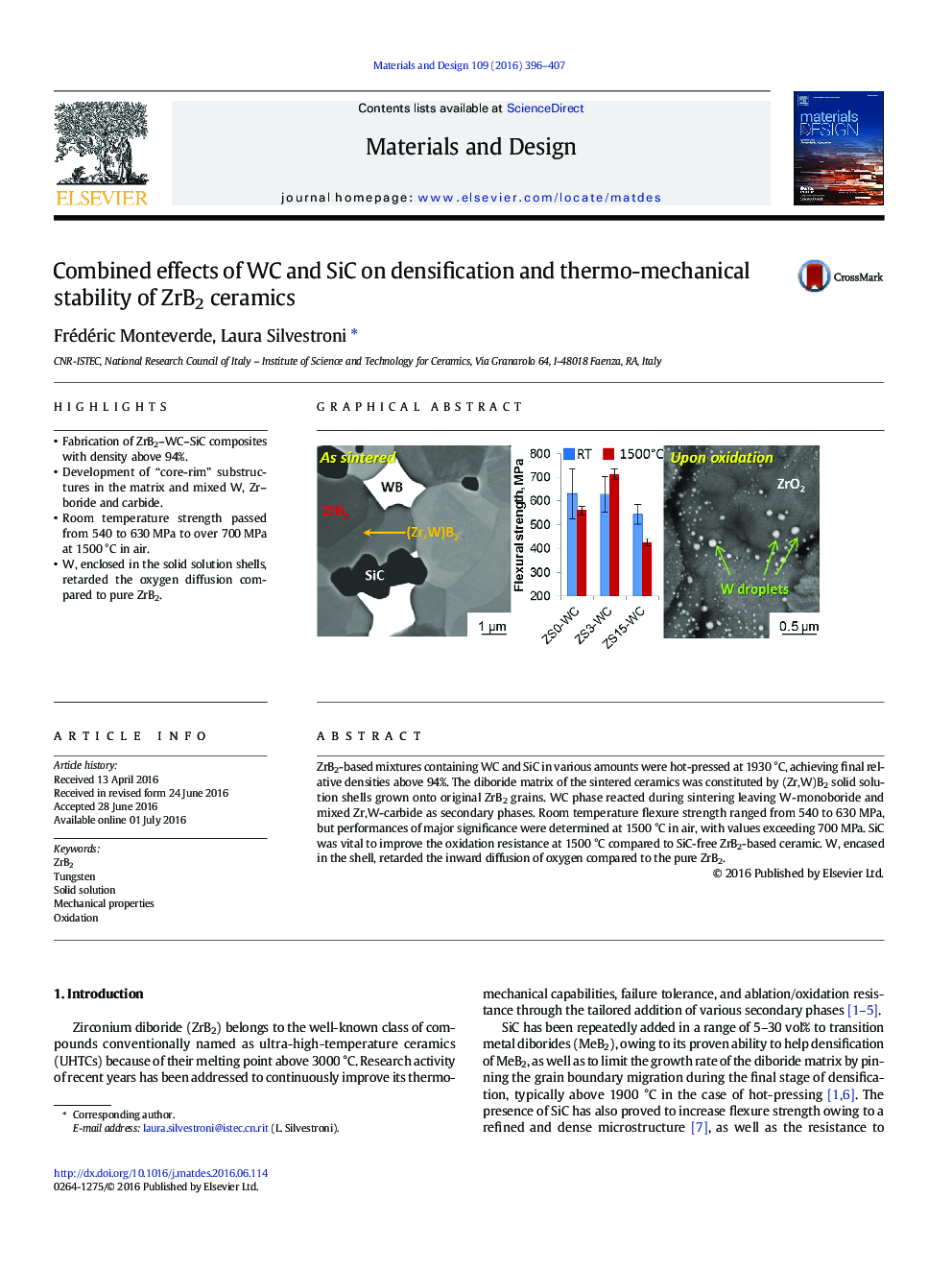| Article ID | Journal | Published Year | Pages | File Type |
|---|---|---|---|---|
| 827711 | Materials & Design | 2016 | 12 Pages |
•Fabrication of ZrB2–WC–SiC composites with density above 94%.•Development of “core-rim” substructures in the matrix and mixed W, Zr–boride and carbide.•Room temperature strength passed from 540 to 630 MPa to over 700 MPa at 1500 °C in air.•W, enclosed in the solid solution shells, retarded the oxygen diffusion compared to pure ZrB2.
ZrB2-based mixtures containing WC and SiC in various amounts were hot-pressed at 1930 °C, achieving final relative densities above 94%. The diboride matrix of the sintered ceramics was constituted by (Zr,W)B2 solid solution shells grown onto original ZrB2 grains. WC phase reacted during sintering leaving W-monoboride and mixed Zr,W-carbide as secondary phases. Room temperature flexure strength ranged from 540 to 630 MPa, but performances of major significance were determined at 1500 °C in air, with values exceeding 700 MPa. SiC was vital to improve the oxidation resistance at 1500 °C compared to SiC-free ZrB2-based ceramic. W, encased in the shell, retarded the inward diffusion of oxygen compared to the pure ZrB2.
Graphical abstractFigure optionsDownload full-size imageDownload as PowerPoint slide
